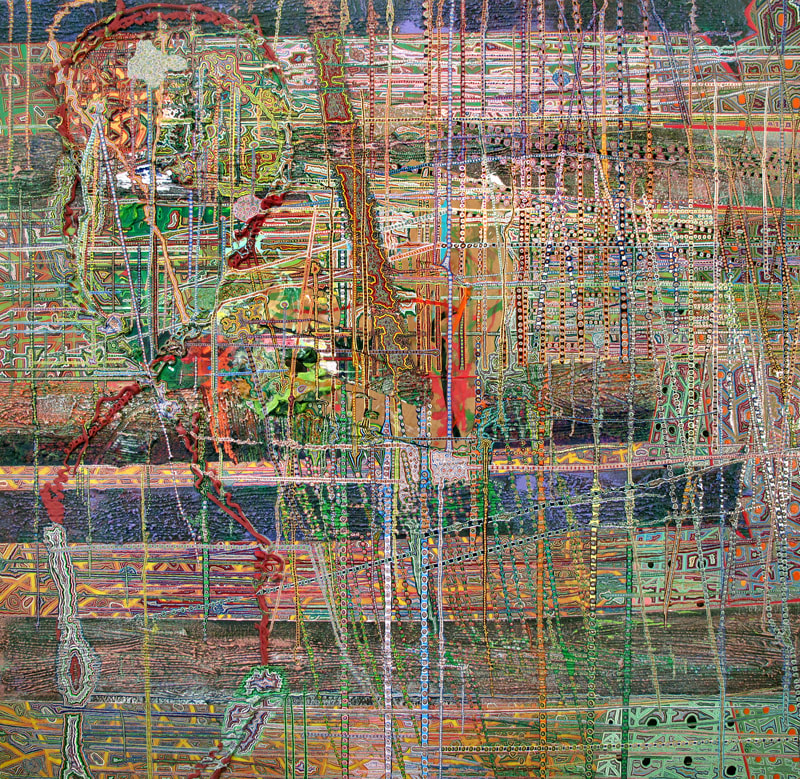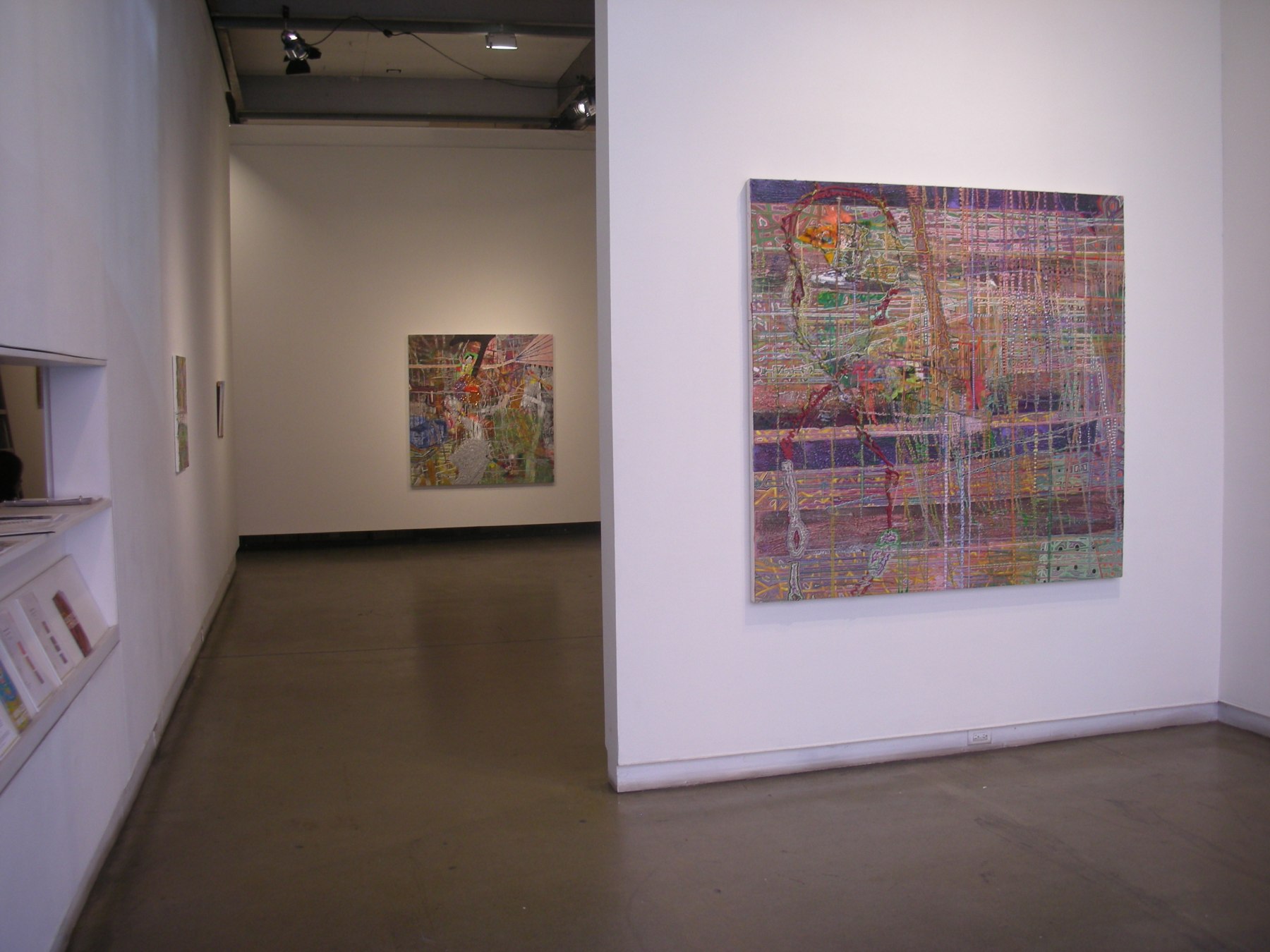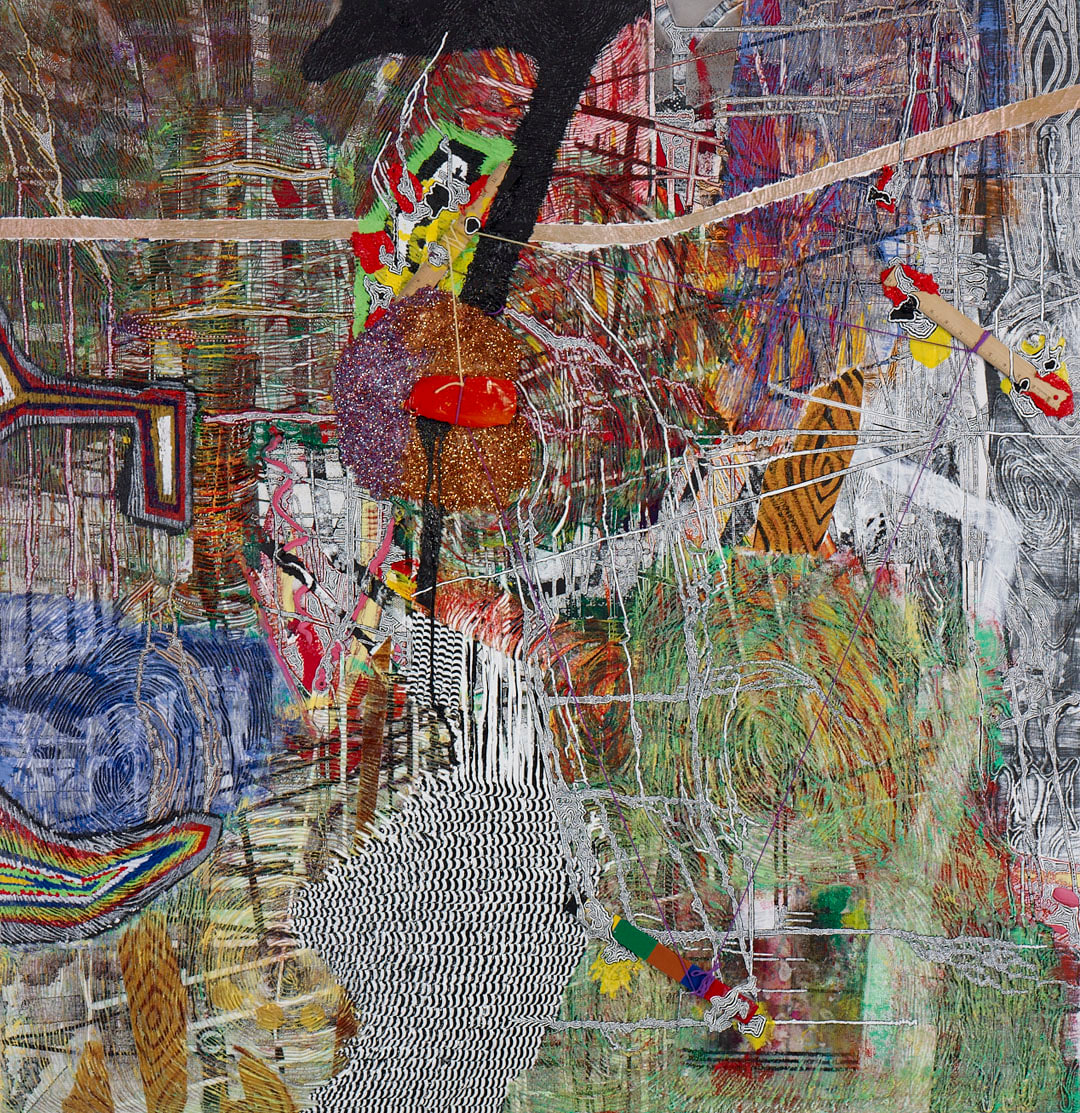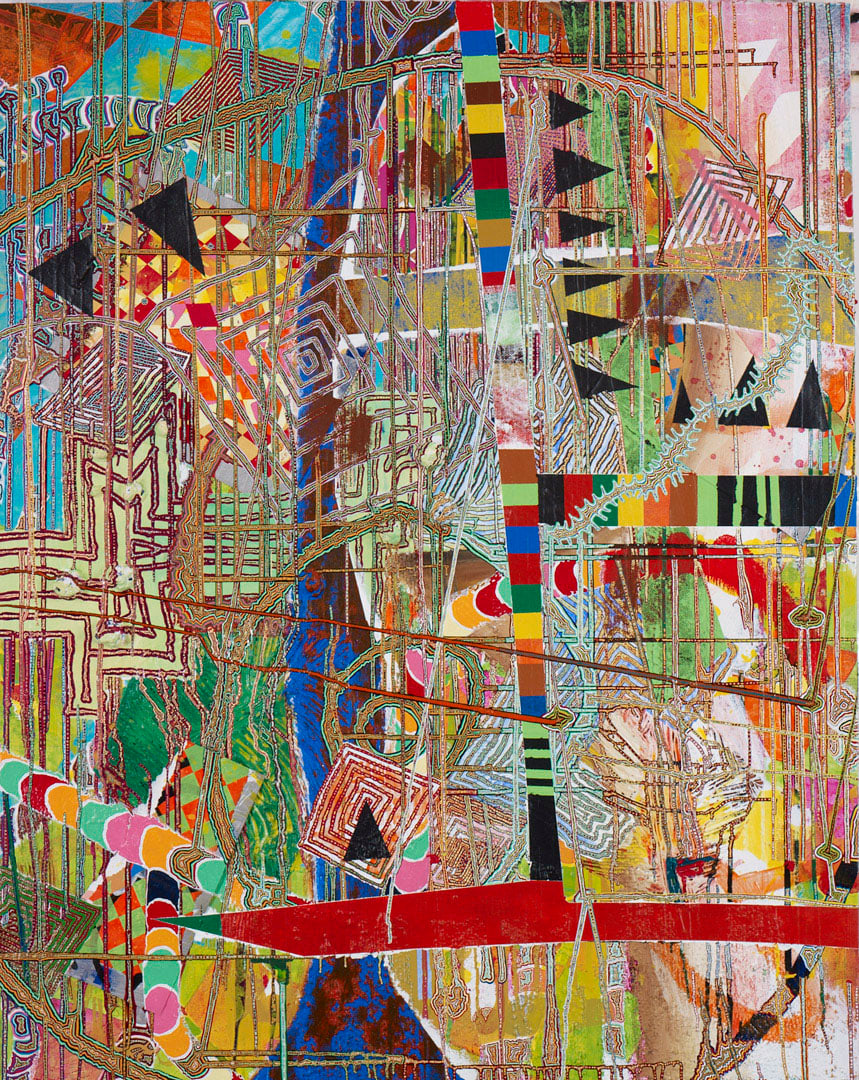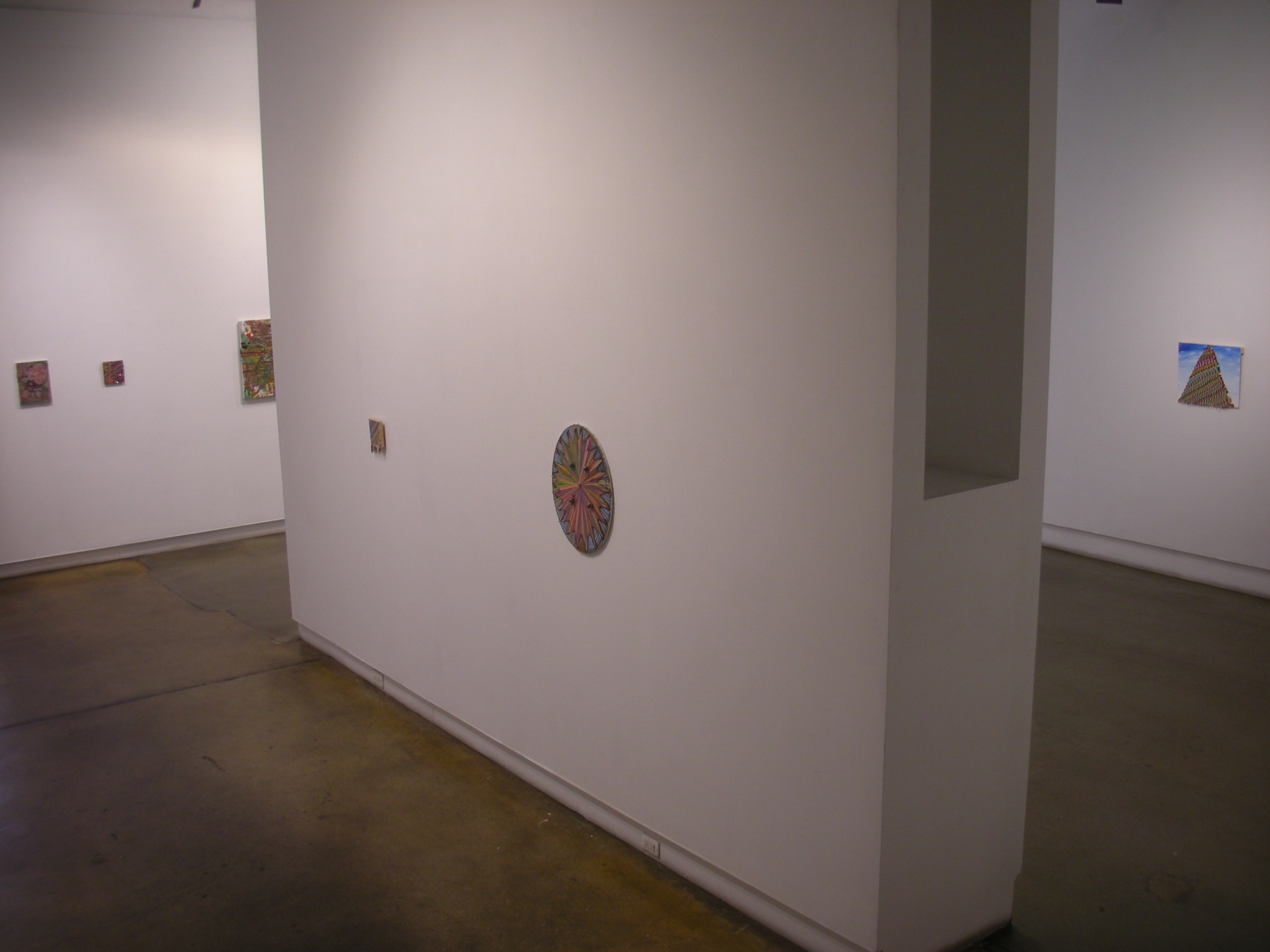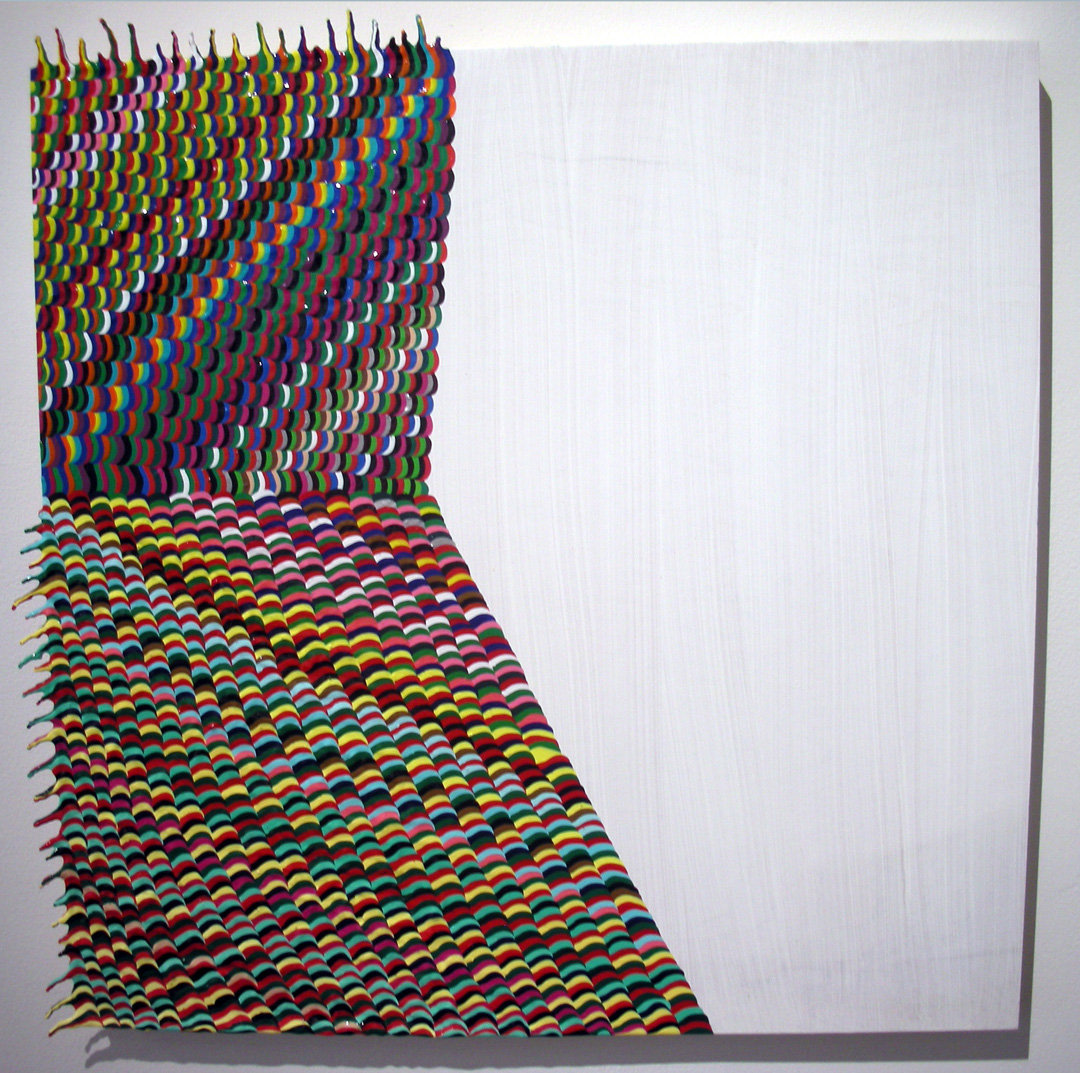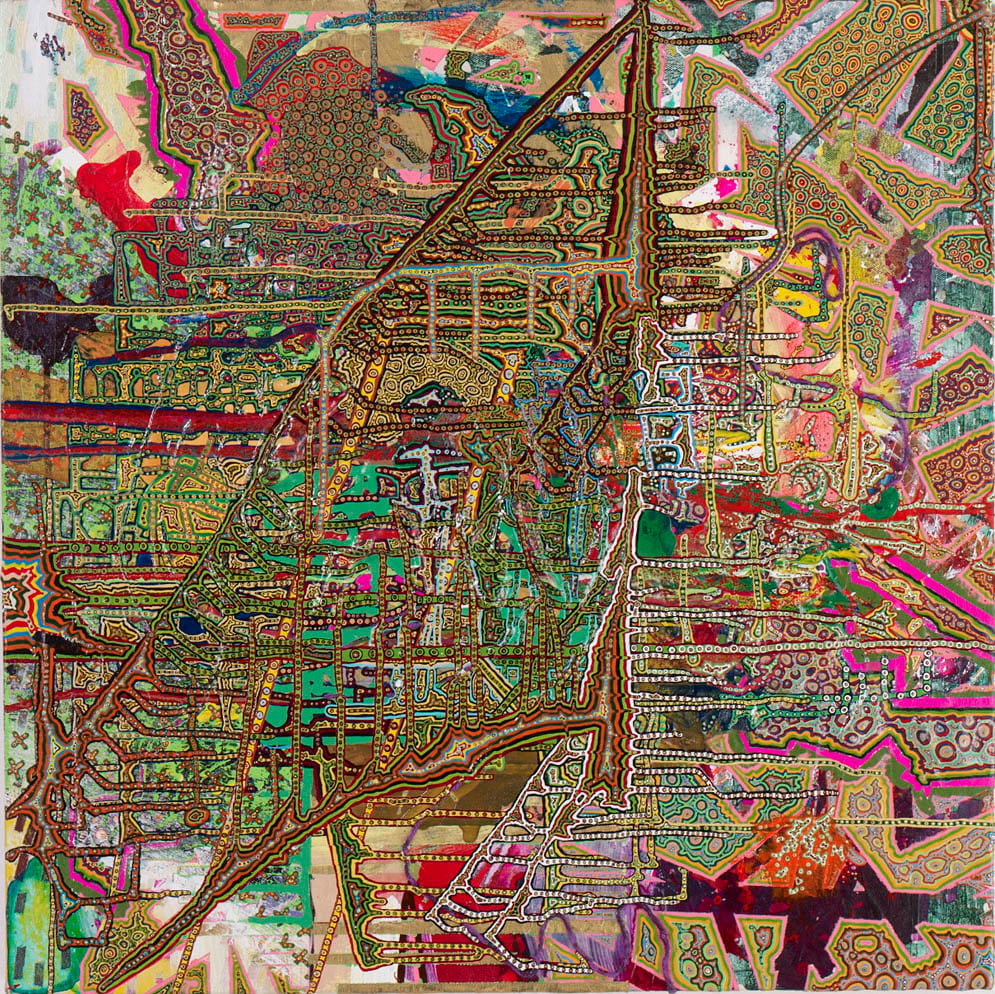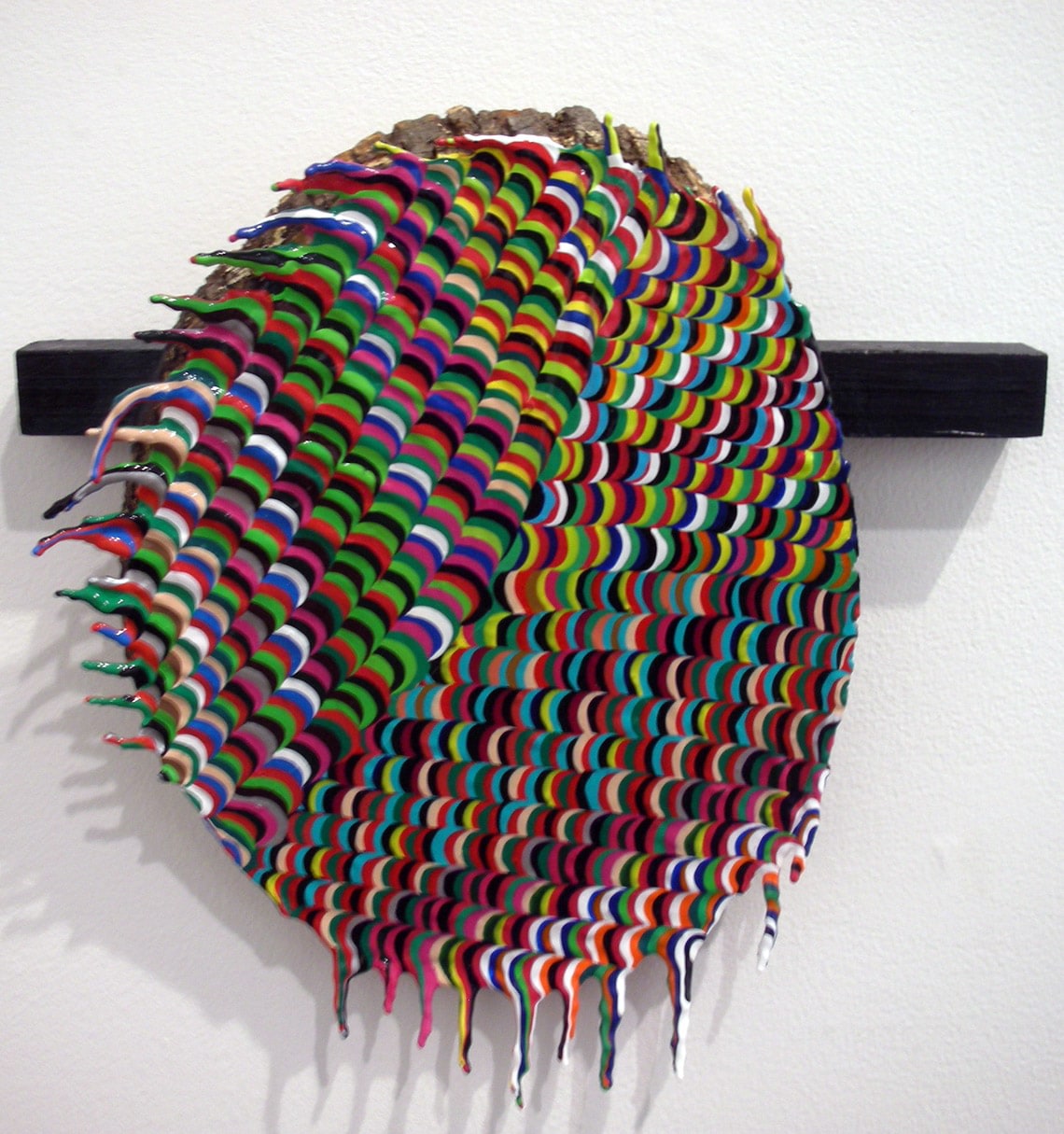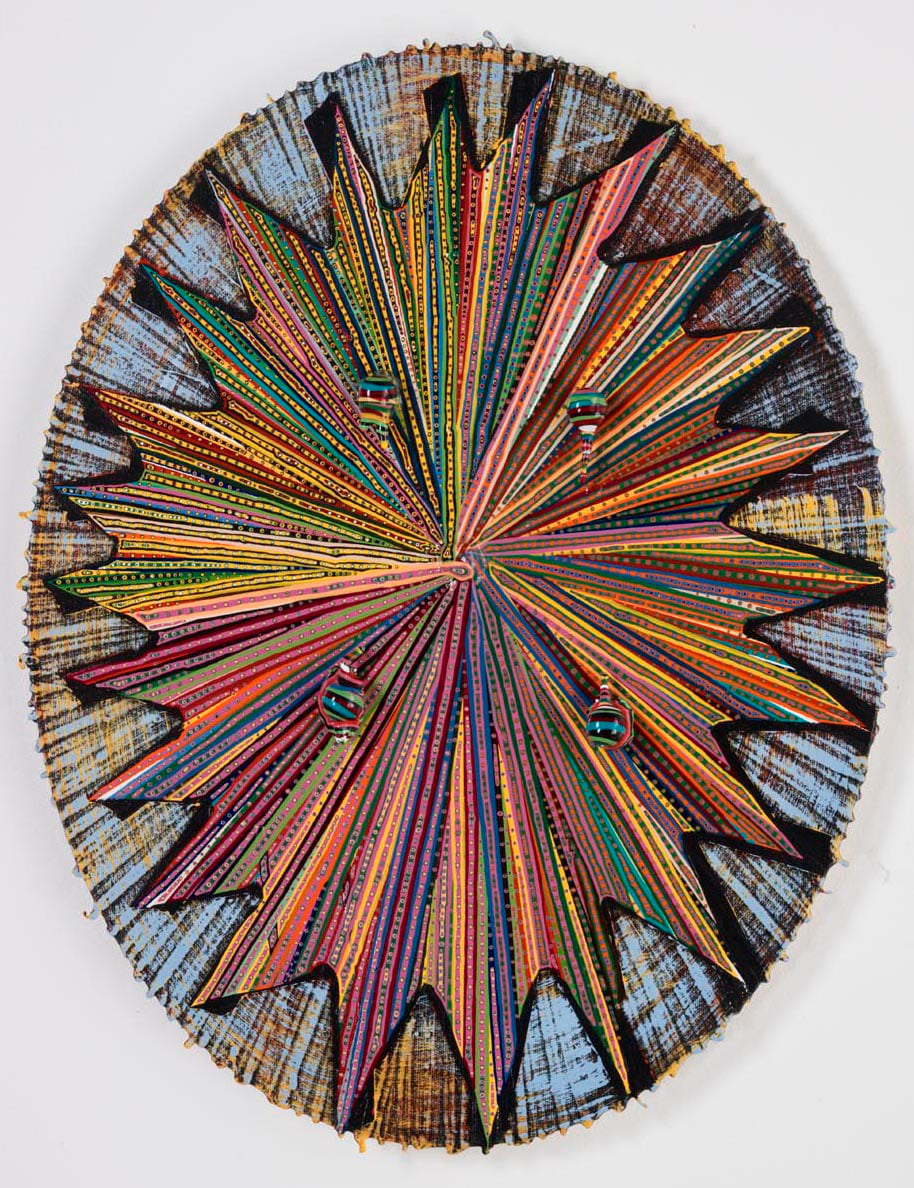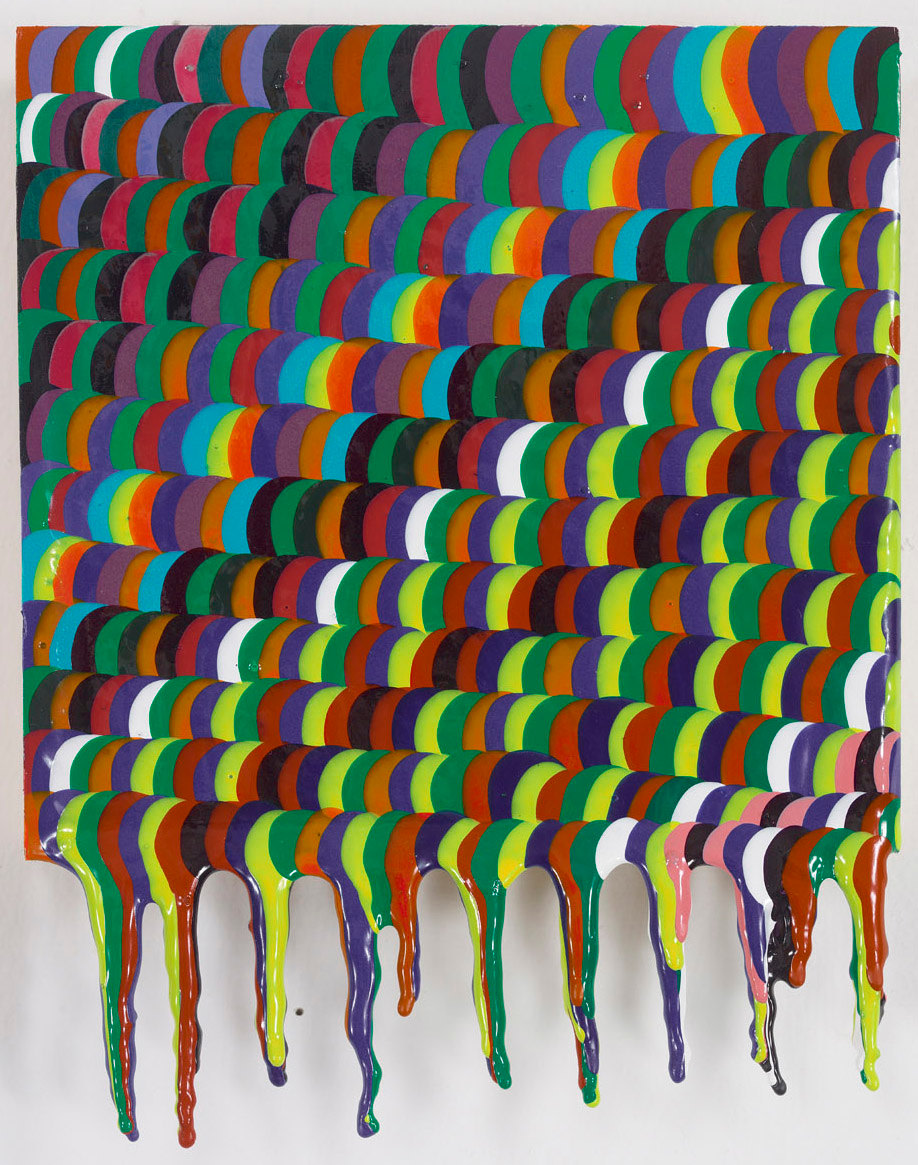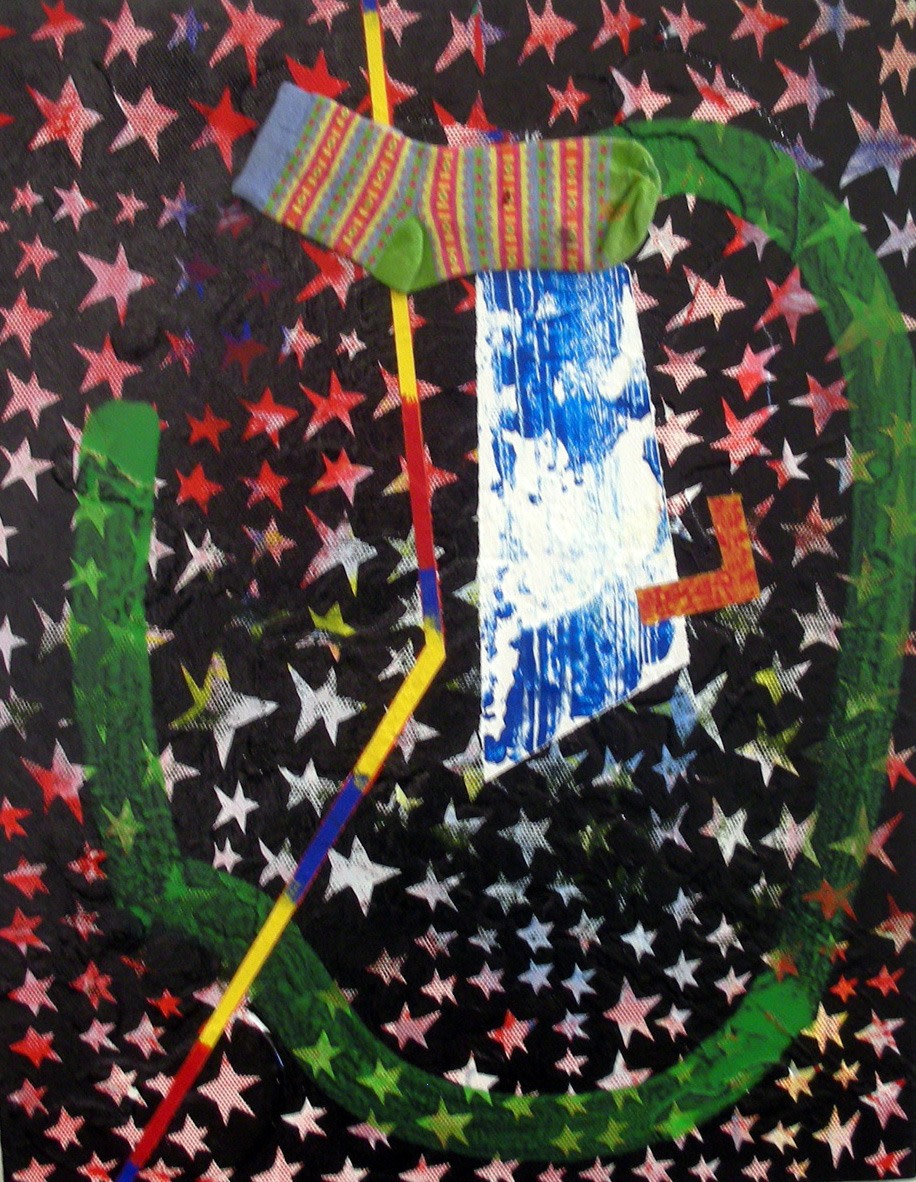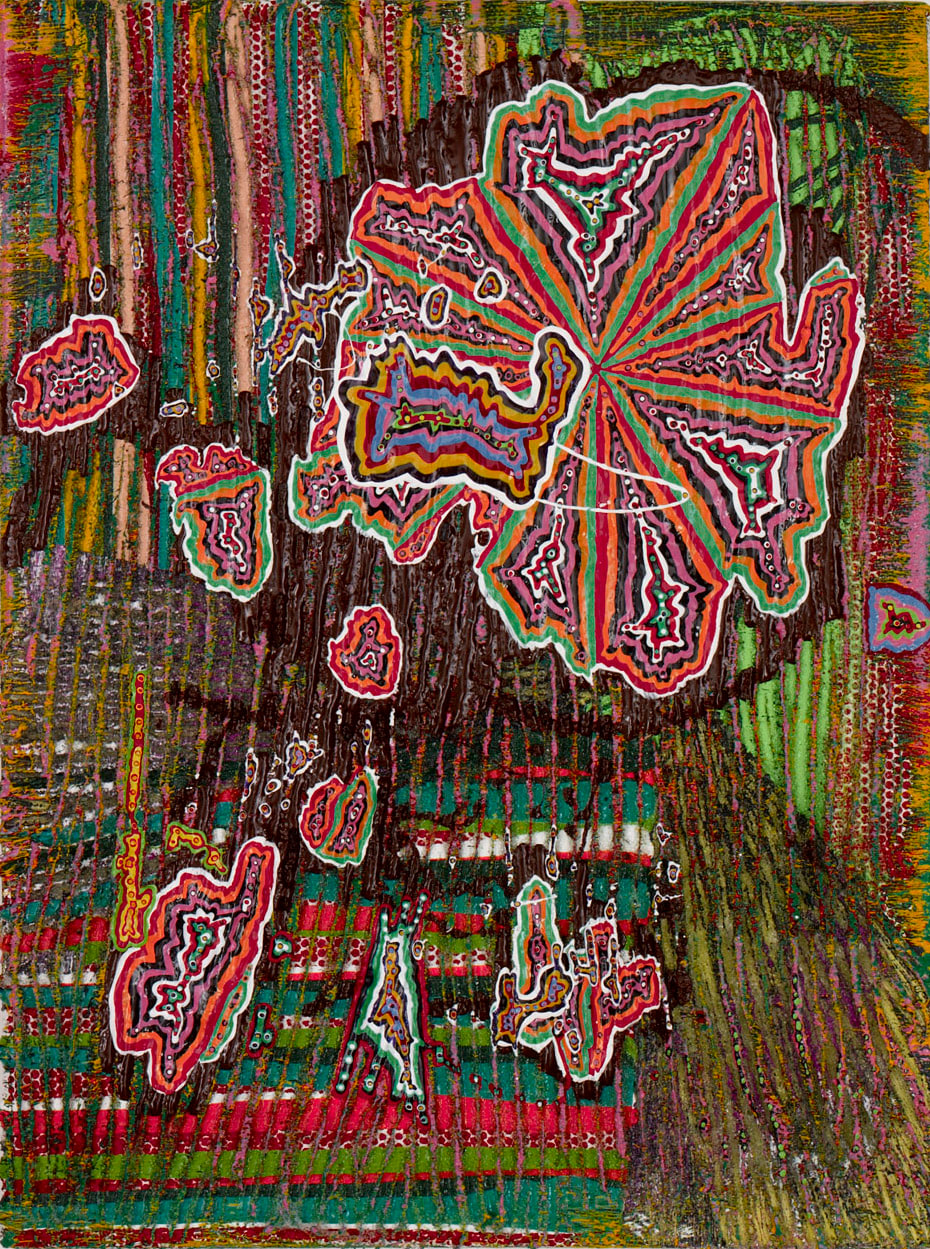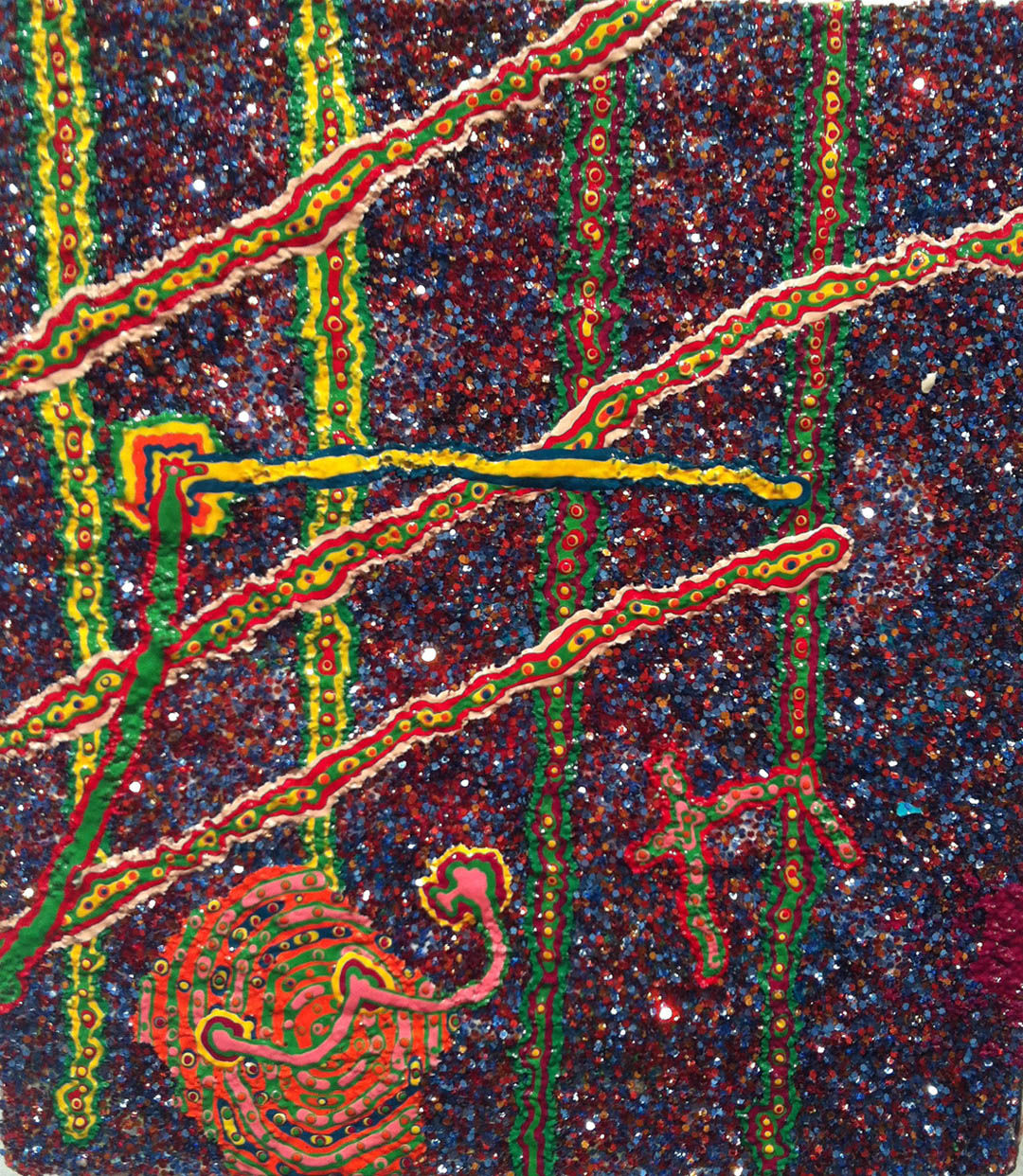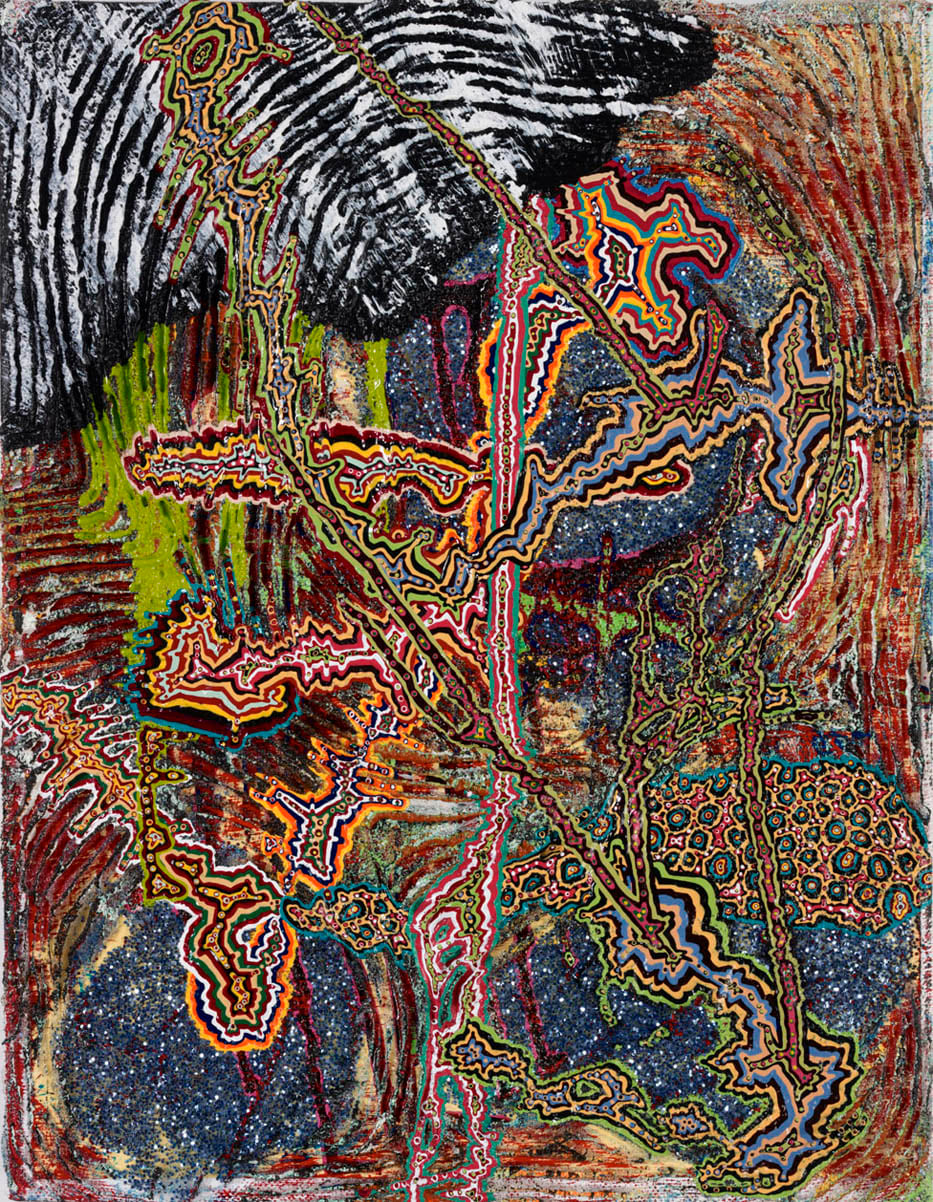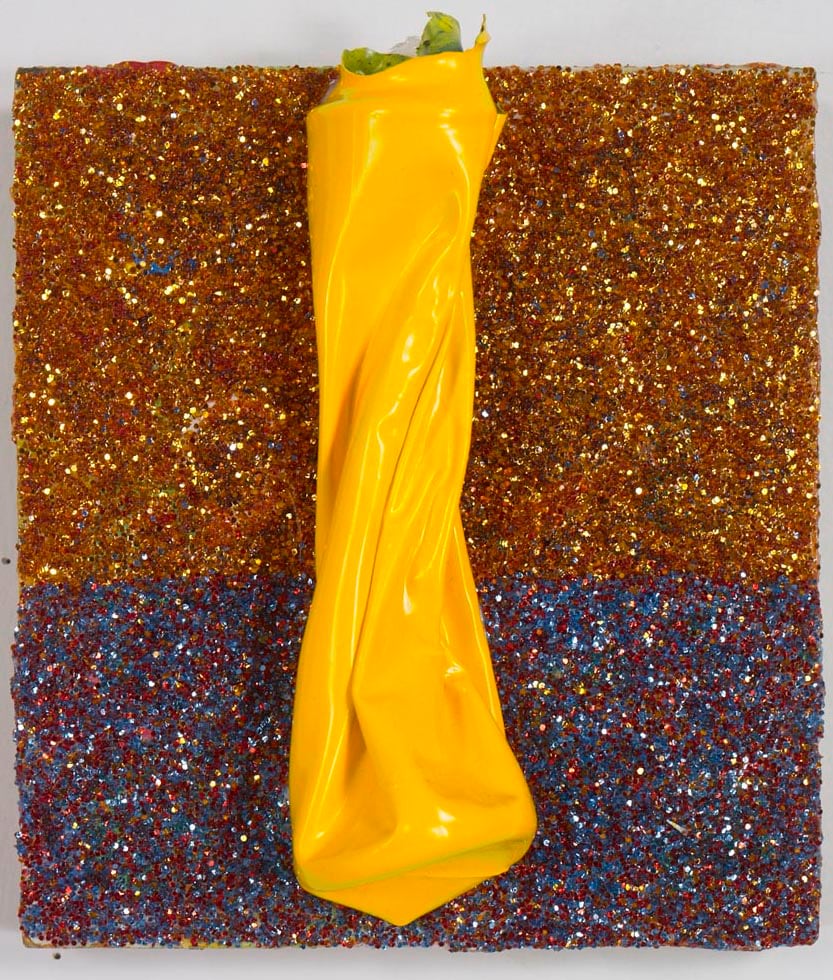Stux Gallery is pleased to announce Steven Charlesʼ new solo show, “I Donʼt Know What My Life To Do With”. This is Charlesʼ sixth solo show and first show at Stux. Working with a vast repertoire of imaginative materials and painting processes, Charlesʼ canvases offer an electrifying clash of dizzying, explosive patterns, complemented by the presence of staunch control.
Born to an auto-worker father in England, Charles grew up in Texas and became the only artist in his family. He abandoned his original interest in portraiture and landscape paintings after experiencing abstractionʼs ability to generate confusion and mystery to him. His unplanned, spontaneous, oversaturated and borderline psychedelic paintings are executed with exhausting exactness and discipline. A genuine lover of “clutter”, Charles admires minimalists such as Agnes Martin for their restraint.
Severely nearsighted, Charles works inches away from the canvas, and obsessively covers every inch of the fabric with layers of dense patterns of bright, sometimes microscopic enamel dots and playful surfaces. Every edge is precisely calibrated, and the interlacing patterns allude to a possible overarching rhythm. This insistence for order creates a frustrating sense of confinement that makes the spontaneous, bursting energy of his dynamic technique even more dazzling. Objects such as rulers, towels and yarn are occasionally incorporated frenetically without apparent consideration for anything besides their contour and texture. Viewed at a distance, the intricate details recede, and the dizzying breathlessness transforms into an overwhelming sensation of depth and expansiveness.
Charlesʼs maximalist, completely abstract surface questions the notion that abstraction, by common definition, is a process of reduction. Maps, terrains, computer circuits, native American references, urban plans and biological forms all appear as viewers attempt to decipher his pulsating networks. His saturated images become mirrors that viewers canʼt help but project themselves upon, but any faint recognition of identifiable forms will become immediately overturned by Charlesʼ gift for creating ephemeral, seemingly intentional suggestions.

